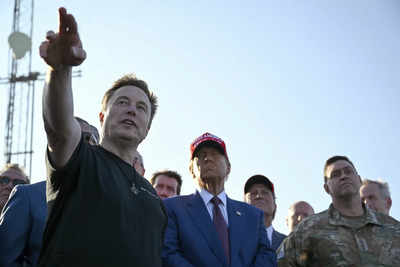If you thought major media organizations operated entirely independently, the numbers tell a more complex story. Data from USAspending.gov and other sources reveal that several legacy media outlets have received significant funding from US government agencies, including USAID and NASA. While some argue this funding supports press freedom and media development, others raise concerns about potential conflicts of interest. Here’s a breakdown of how much government money has been directed toward these organizations.
Reuters received $9 million, awarded to its subsidiary Thomson Reuters Special Services (TRSS) by the US Defense Advanced Research Projects Agency (DARPA). The funding was for evaluating defensive tools, not newsroom activities, but the connection sparked debate. Reuters clarified that TRSS is a separate entity from its news division, emphasizing that the funding did not influence its editorial independence.
The Associated Press (AP) received over $500,000 in federal payments before Elon Musk’s newly established Department of Government Efficiency (DOGE) reportedly terminated the arrangement. While the amount is relatively small compared to other outlets, it nonetheless contributed to broader discussions about government-media financial relationships.
Politico received $500,000 from NASA for subscriptions and an additional $32 million from various other government departments. Much of this funding went toward Politico Pro, a specialized policy and research service. After scrutiny, NASA later cancelled its Politico subscriptions, adding fuel to the ongoing debate over government spending on media organizations.
The New York Times has received at least $2.6 million in funding from various US government agencies between 2008 and 2024. Though a relatively modest sum compared to others, the financial ties have prompted discussion about media independence. Figures like Elon Musk have labeled the NYT as “government-funded media,” a characterization the publication does not acknowledge.
The BBC received £2.6 million (approximately $3.2 million) from USAID to support journalism training, public education initiatives, and media development across more than 30 countries. While USAID’s funding officially ended in 2011, the BBC has continued to acknowledge its past support as part of its broader global partnerships.
One of the largest recipients of government funding in this space is Internews, which has received $404 million since 2008. The organization focuses on training journalists, supporting digital rights activists, and advancing internet freedom in over 100 countries, including India, where it claims to have supported 75,000 individuals, including journalists, students, and activists.
The figures highlight the extent of government funding for media-related organizations, raising ongoing discussions about its implications. While some view it as essential for media development and press freedom, others question whether such financial relationships could affect editorial independence. The debate continues over where the line should be drawn between public interest support and potential influence.







